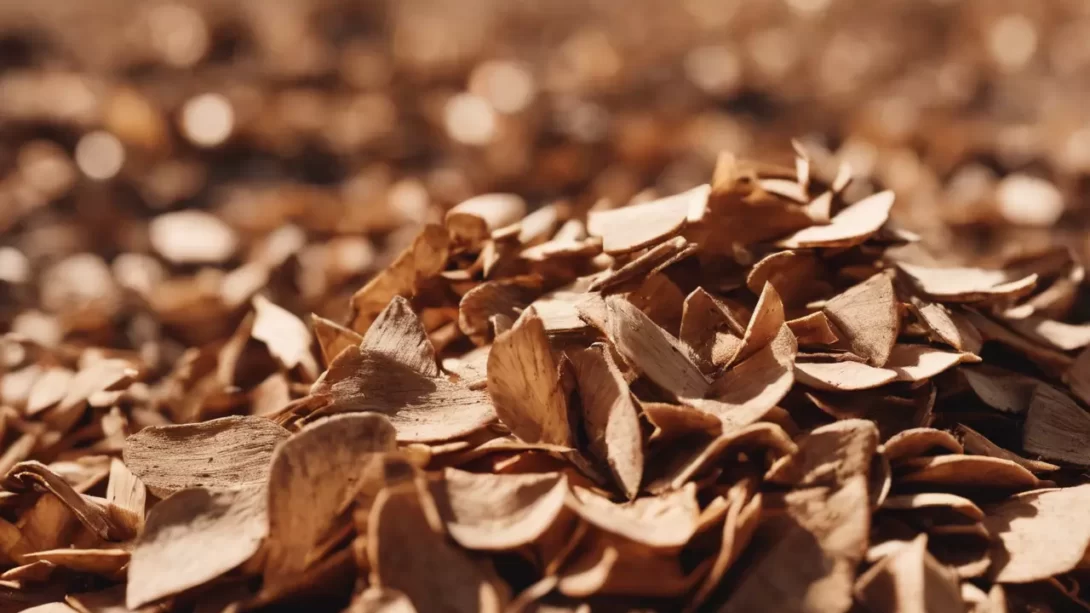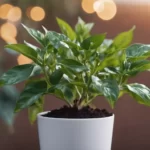Wood chips are a popular and versatile material in the world of gardening and landscaping. Obtained from various sources, including local tree services and garden centers, wood chips offer a natural, aesthetically pleasing way to enhance garden health and beauty. This article explores the multiple uses of wood chips in the garden, detailing how they can be utilized for everything from mulching to creating garden paths, improving soil health, and even contributing to composting efforts.
Benefits of Wood Chips in the Garden
Wood chips are renowned for their myriad benefits in the garden. As a mulch, they excel in retaining soil moisture, thereby reducing the need for frequent watering. They also suppress weeds effectively, keeping garden beds neat and reducing competition for nutrients. In addition, wood chips help regulate soil temperature, protecting plant roots from extreme heat in summer and cold in winter. These benefits contribute significantly to a healthier and more sustainable garden environment.
Using Wood Chips as Mulch
When using wood chips as mulch, proper application is key. It’s recommended to spread a layer about 2 to 4 inches thick around plants and trees. This thickness is sufficient to provide the benefits of moisture retention and weed suppression without risking issues such as root rot or attracting pests. However, it’s important to leave some space around the base of plants and tree trunks to prevent moisture buildup and potential fungal growth. Wood chips as mulch work well in flower beds, vegetable gardens, and around trees and shrubs, providing a natural and organic solution to many gardening challenges.
Wood Chips for Soil Improvement
Beyond their use as mulch, wood chips can significantly improve soil quality. As they slowly decompose, they add organic matter to the soil, enhancing its structure and fertility. This process encourages beneficial microbial activity, which in turn aids in nutrient absorption by plants. Over time, gardens with wood chip mulch often exhibit improved soil texture, increased water retention, and better overall health.
However, it’s important to note that while decomposing, wood chips can temporarily tie up nitrogen in the soil, potentially affecting plant growth. This is typically not a concern for mulching around established trees and shrubs but can be a consideration in vegetable gardens or annual flower beds. To counteract this, adding a nitrogen-rich fertilizer to the soil before applying wood chips can be beneficial.
Creating Garden Paths with Wood Chips
Wood chips are an excellent material for creating natural-looking garden paths. They provide a soft, even surface that’s comfortable to walk on and visually appealing. To construct a wood chip path, first, lay down a weed barrier fabric to prevent weeds from growing through the chips. Then, spread the wood chips over the fabric to a depth of about 2 to 4 inches. These paths require some maintenance, such as topping up the wood chips annually, but they are a cost-effective and attractive way to add structure to your garden layout.
Wood Chips in Composting
Wood chips can also play a valuable role in composting. They are a great source of carbon, which is necessary to balance the nitrogen-rich materials like kitchen scraps and green garden waste. When adding wood chips to a compost pile, it’s essential to maintain the right carbon-to-nitrogen ratio for effective decomposition. A general guideline is to use a mix of about one-third green materials (nitrogen) to two-thirds brown materials (carbon).
For optimal composting, chip size matters. Smaller chips decompose faster than larger ones. Also, keep the compost moist and turn it regularly to accelerate the breakdown process. Over time, wood chips in compost will break down into rich, nutrient-dense humus, perfect for amending garden soils and boosting plant growth.
Other Creative Uses for Wood Chips
Wood chips are not just limited to mulching and composting; they have several other creative applications in the garden. For instance, they can be used in playground areas, providing a safe and natural cushioning surface. In chicken runs, wood chips help to control mud and odors, making for a cleaner and more comfortable environment for poultry.
Another great use of wood chips is as a base for raised garden beds. They can help improve drainage and, over time, decompose to add nutrients to the soil. Additionally, wood chips can be employed in decorative landscaping, offering a rustic charm to garden borders and pathways.
Potential Drawbacks and Considerations
While wood chips offer many benefits, there are potential drawbacks to consider. One concern is the attraction of termites, especially when wood chips are used near house foundations. To mitigate this risk, it’s advisable to use chips made from cedar or other less appealing woods to termites, and to maintain a safe distance from structures.
Another consideration is the type of wood. Chips from treated or painted wood should be avoided as they can leach harmful chemicals into the soil. Additionally, some types of wood, like walnut, release substances that can be toxic to certain plants.
Nitrogen depletion can occur when fresh wood chips are mixed directly into the soil, as they consume nitrogen during decomposition. To avoid this, it’s best to let the chips partially decompose before mixing them into garden beds, or to supplement with a nitrogen-rich fertilizer.
Conclusion
Wood chips are a multifaceted resource in gardening and landscaping. From enhancing soil health as mulch to creating charming garden paths and contributing to compost, their uses are as diverse as they are beneficial. While considering their potential drawbacks, gardeners can utilize wood chips to make their gardens more sustainable, productive, and visually appealing.
The key to making the most of wood chips lies in understanding their properties and how they interact with your specific garden environment. With this knowledge, gardeners can harness the full potential of wood chips, turning this simple byproduct into a valuable asset for their gardens.



